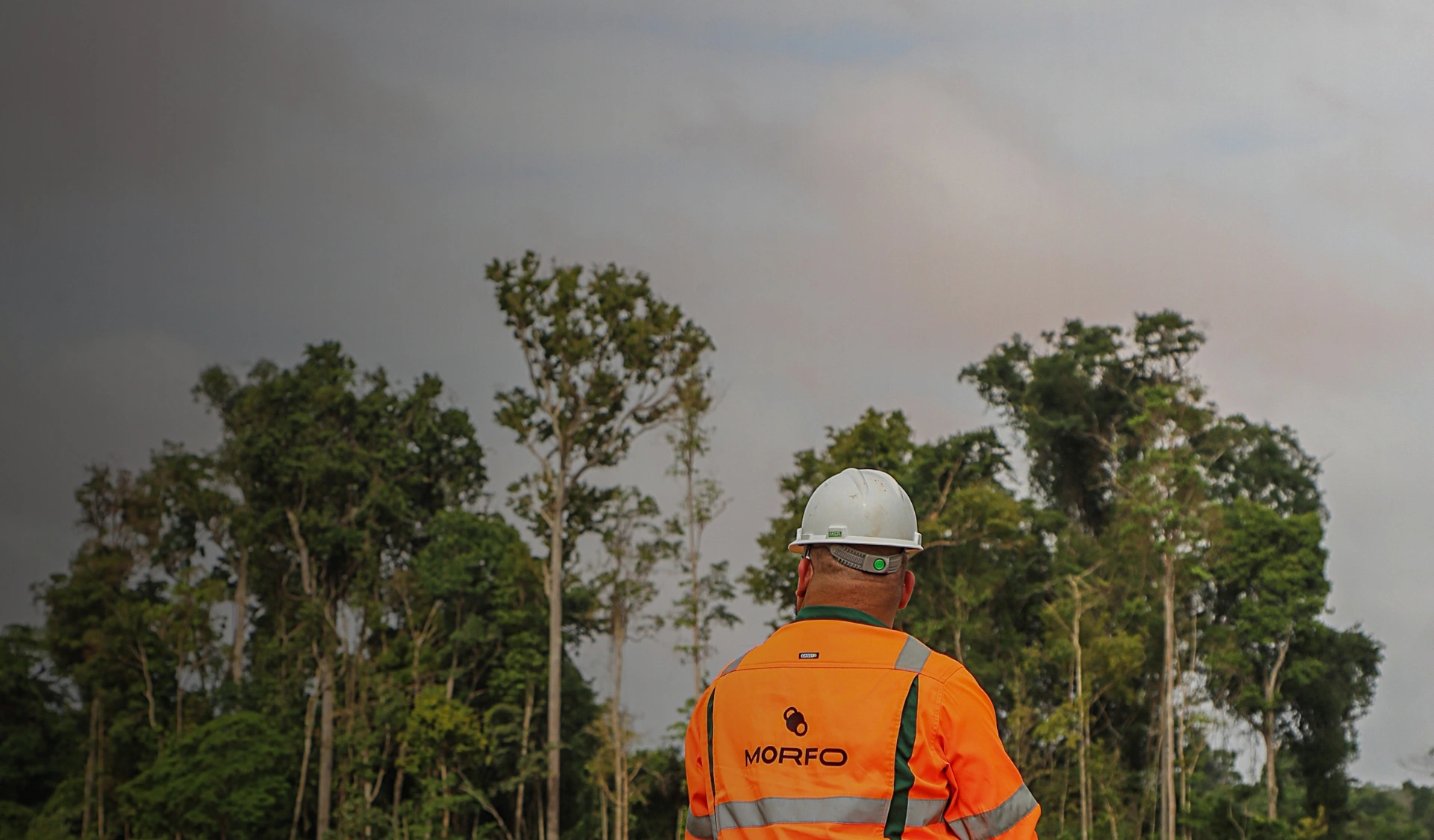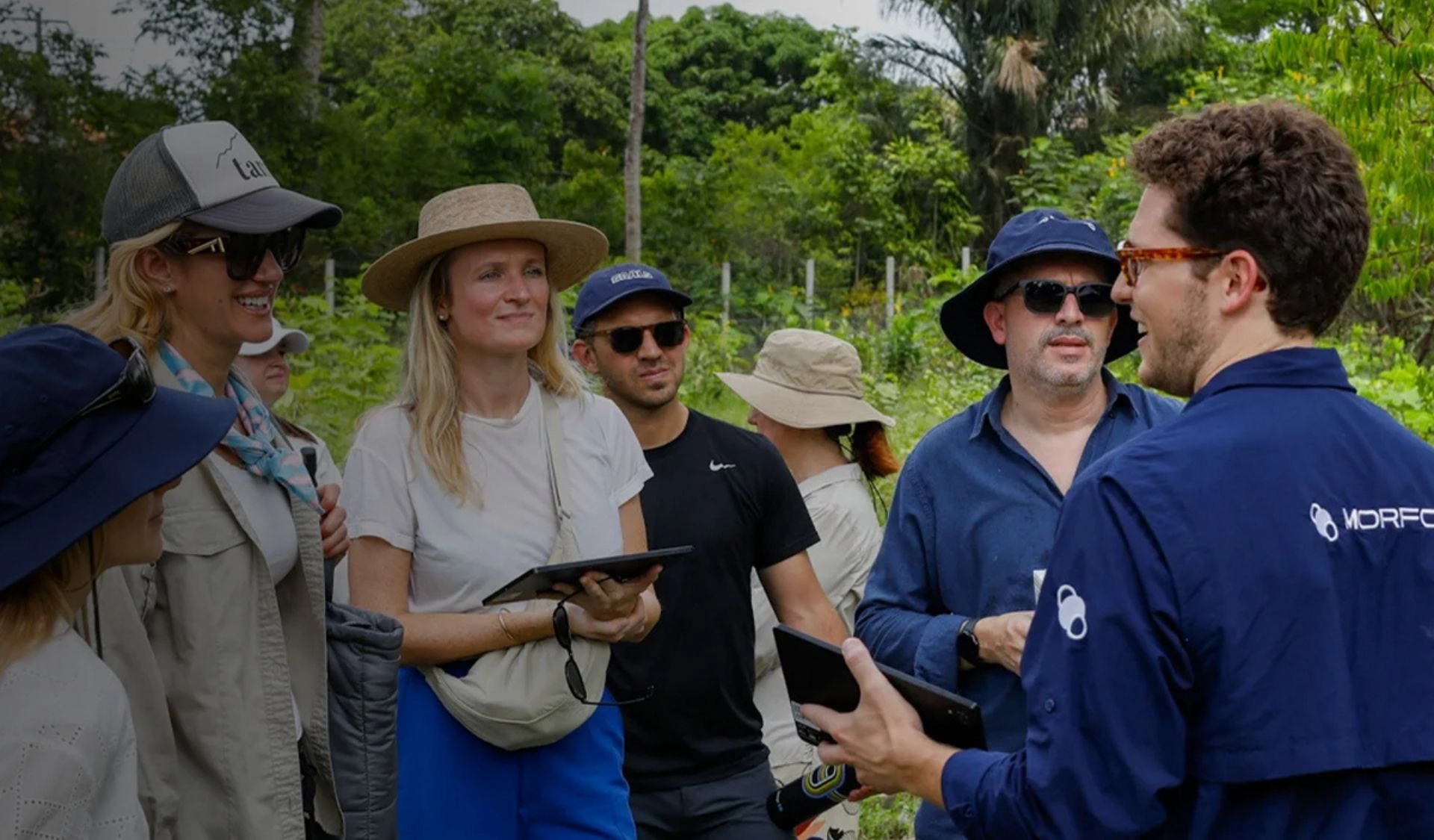Reforestation is crucial to restoring degraded ecosystems. However, well-informed reforestation, based on judicious choices of species to plant, is better. It contributes not only to the restoration of ecosystems, but also to their long-term sustainability.
Soil analysis is a crucial step in ensuring the success of reforestation. Soils vary in composition and fertility, and their analysis helps to select appropriate forest species and prevent problems such as acidity or salinity. It also guides management practices, reducing tree mortality rates and ensuring the long-term restoration of ecosystems.
At MORFO, a large-scale forest ecosystem restoration solution, we know the importance of soil analysis and understanding in reforestation projects. We are working on R&D focused on the study of soils and native species, in partnership with a number of renowned laboratories in France and Brazil.
In this article, we explore the benefits of soil analysis and understanding before and after a reforestation project, and how MORFO uses these techniques and its knowledge to maximize the success rates of its projects.
Understanding soils for successful reforestation
Different types of soil and their characteristics
To understand why soil analysis is essential for reforestation, it's essential to know about the different types of soil and their characteristics. Soils vary considerably in composition, texture, drainage and pH. These differences have a direct impact on tree growth. For example, a clay soil will retain water longer, while a sandy soil will drain quickly. Each soil type has advantages and disadvantages for tree growth, making it crucial to choose the right tree species for each environment.
The important role of soils in tree growth and ecosystem health
Soils are more than just substrates for trees: they provide essential nutrients for their growth. Nutrients such as nitrogen, phosphorus and potassium are absorbed by tree roots from the soil. Soils are also home to a multitude of beneficial micro-organisms, contributing to the overall health of the forest ecosystem. Symbiosis between trees and soil micro-organisms plays an essential role in forest regeneration.
Soil diversity and the challenges linked to its degradation
A major challenge in reforestation lies in the diversity of soils that can be found on the same site. Local soil differences can be drastic, and the ignorance of these variations can lead to planting failures. In addition, soil degradation caused by unsustainable farming practices or pollution can create hostile conditions for tree and froest growth, and for soil life in general. Thanks to in-depth analyses, these problems are identified and taken into account, reinforcing successful reforestation efforts.
MORFO analyses soils for successful biodiversity restoration
In-depth soil analysis is one of the key steps in our ecosystem restoration solution. It enables us to make informed decisions throughout our projects and includes :
- Collecting representative samples
- Analysis in partnership with renowned laboratories
- Careful preparation and proper planting
- Continuous forest monitoring.
Here's how MORFO collects samples for soil analysis
Soil is analysed during the diagnosis and monitoring of the degraded area to be reforested, using two main methods: soil characterization by strata and the FAO handling test protocol.
- Soil characterization by strata yields a variety of samples that enable us to determine the general characteristics of the degraded area. We take samples from a reference forest model located close to the area, enabling us to compare them.
- The rapid soil texture analysis technique enables us to quickly estimate soil composition in the field, without the use of sophisticated equipment. We follow the FAO protocol of the handling test. In this multi-stage test, different shapes are made with a moist soil sample. A sandy soil texture, for example, may indicate an increased risk of erosion and may influence the types of plant species that can thrive in that area.
- It is also important to take soil compaction into account. Soil that is too compacted hinders root development. We study compaction by testing soil resistance.
We analyze the soil to understand its current condition
Soil analysis and diagnosis are crucial steps in the planning and implementation of forest ecosystem restoration projects. They provide a solid basis for informed decisions, thus contributing to the preservation and regeneration of forest ecosystems.
Soils vary in composition, structure and quality. Our analyses provide essential information on the soil's physical, chemical and biological characteristics, such as: texture, chemical and organic composition, organic matter, biomass and microbial diversity, structure, density, acidity, water content, soil contaminants, and so on. All these properties together make up the Soil Quality Index (SQI).
Thanks to the soil quality index we assess the current state of the soil and adapt our restoration strategy accordingly. Decisions are made concerning restoration practices, plant species and measures to improve soil quality.
MORFO partners with renown laboratories to carry out analyses and gather fundamental knowledge before launching a reforestation project. A partnership between MORFO and the Federal University of Viçosa in Brazil, enables us to carry out microbiological analyses based on the SQI method developed by UFV.
Knowledge of soil quality influences its preparation and allows proper planting
Soil preparation and appropriate planting are carried out following the diagnosis of degraded lands. It is important to take the specific characteristics of each area into account, such as moisture content, slopes and soil type, in order to plant different forest species appropriately.
By using approaches such as phytoremediation, which involves choosing plants that are adapted and resistant to the soil type, as well as strengthening soil fixation to prevent erosion and/or using green manures to enrich the soil, we can maximize the chances of success of reforestations projects while improving soil quality.
Each forest species has specific needs in terms of soil composition. Soil analysis enables the appropriate selection of species that will thrive in a given environment, particularly if it is polluted. This promotes the preservation of biodiversity and the efficient use of resources, while anticipating and correcting potential problems to ensure the survival and growth of forests.
Moreover, the use of our seedpods containing nutrients and a good level of hydration guarantees a good seedling and plant growth.
MORFO's forest monitoring assesses changes in soil quality
Gathering initial soil condition data is essential to assess the effectiveness of our restoration efforts over time.
We use the regeneration index (adapted from the restoration quality index by UFV), a soil quality index, to track the soil's progress towards a normal state — i.e., with the same index as that of nearby forest ecosystems. The regeneration index gathers plant biomass data and soil data. Its objectives are to :
- Assess soil conditions before and after planting.
- Measure restoration success.
- Assess soil condition improvement.
Thanks to continuous monitoring, we can better guarantee the success of environmental restoration projects, and make adjustments if necessary. It should be noted that, although soil analyses are carried out every year, it will be decades before a complete ecosystem develops.








